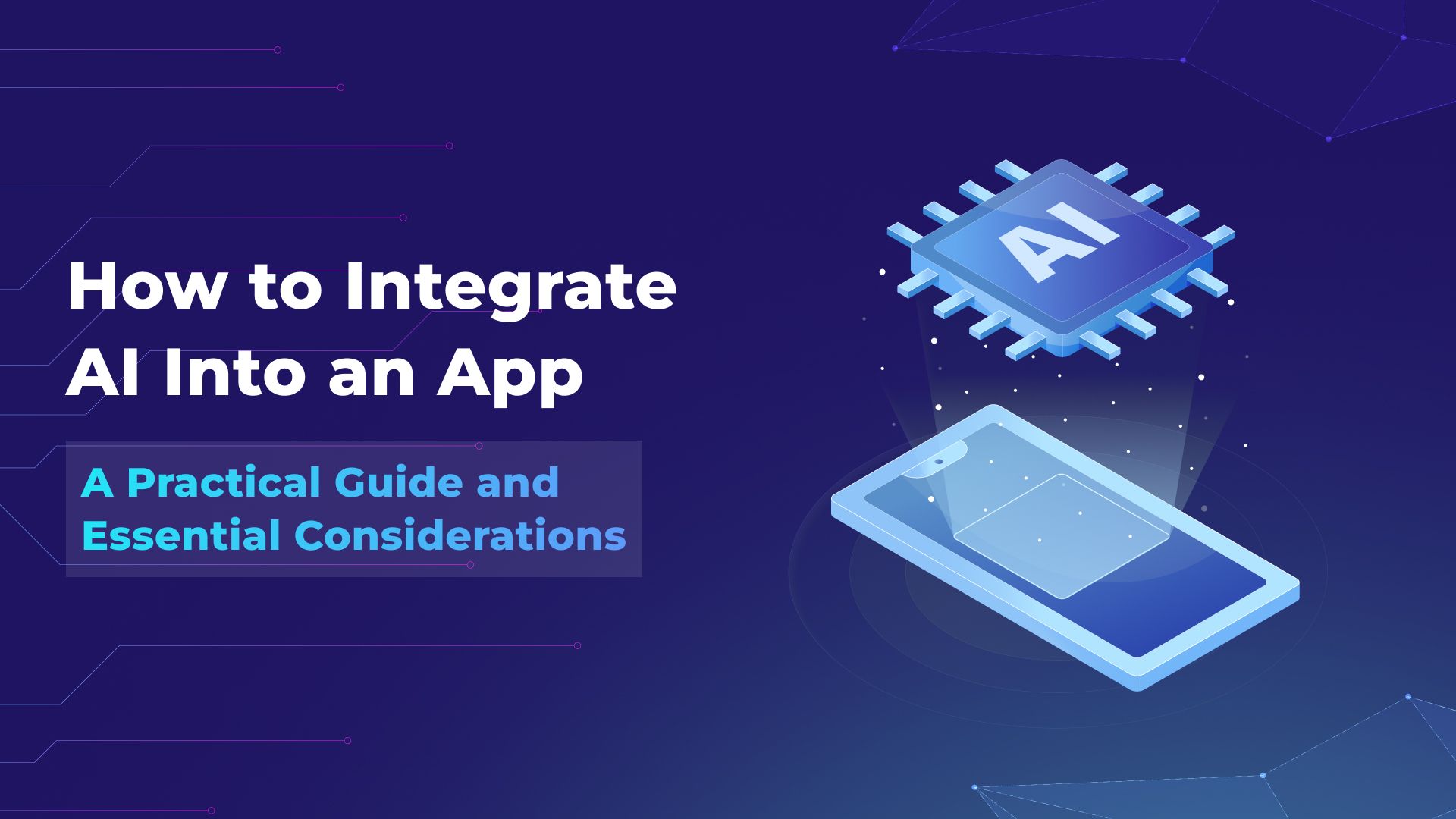
August 15, 2025
How to Integrate AI into Your Apps with Python
How to Integrate AI into Your Apps with Python
AI is innovating app development with time by creating better, more efficient user experiences. Artificial Intelligence can improve app functioning via chatbots, recommendation systems, and image recognition. Python's simplicity, robust libraries, and strong community support make it a popular AI language. We will use Python to incorporate AI into applications in this post. We will also show how to incorporate AI into your mobile, web, or desktop app using important libraries and code examples.
Why Python for AI Development?
Python is ideal for AI development because of its readability and simplicity for beginners and professionals. Its ecosystem includes TensorFlow, PyTorch, scikit-learn, and Keras, which simplify AI tasks. Pre-built machine learning, natural language processing, and computer vision models are available in AI libraries. Python's large community provides resources and documentation, making troubleshooting and help simpler. Its adaptability lets developers use AI in mobile, web, and desktop programs.
Key Python Libraries for AI
- TensorFlow: TensorFlow is developer's favourite, as its an open-source library for developing machine learning models, particularly deep learning networks.
- PyTorch: This excellent library is flexible and widely used for AI research and production.
- Scikit-learn: A beginner-friendly machine learning library with several traditional algorithms.
- Keras: A deep learning package that is easy to use and is based on TensorFlow.
- spaCy: It is a library for natural language processing (NLP) applications, including entity recognition and text classification.
- OpenCV: And at the end, here's a crucial library for computer vision applications, including image and video processing.
Code Example: A simple machine learning model using scikit-learn:
from sklearn.datasets import load_iris
from sklearn.model_selection import train_test_split
from sklearn.ensemble import RandomForestClassifier
from sklearn.metrics import accuracy_score
# Load Iris dataset
data = load_iris()
X = data.data
y = data.target
# Split the data into training and testing sets
X_train, X_test, y_train, y_test = train_test_split(X, y, test_size=0.2, random_state=42)
# Train a Random Forest Classifier
model = RandomForestClassifier()
model.fit(X_train, y_train)
# Make predictions and evaluate the model
y_pred = model.predict(X_test)
accuracy = accuracy_score(y_test, y_pred)
print(f'Accuracy: {accuracy * 100:.2f}%')
Integrating AI into Your App
You may integrate AI into your app on mobile, web, or desktop. So, let's see how you can tackle it:
- Mobile Apps: Build mobile applications with Python using Kivy or BeeWare frameworks for Android or iOS. These frameworks allow mobile platforms to integrate AI models for text categorisation, facial recognition, and chatbots.
- Web Apps: AI model service through REST APIs is possible with Python tools like Flask and Django. Your web app may include AI features like recommendation systems and predictive analytics.
- Desktop Apps: PyQt or Tkinter provide real-time speech recognition and image processing user interface creation and AI model integration.
Simple AI-based chatbot using TensorFlow:
import tensorflow as tf
from tensorflow import keras
import numpy as np
# Load a pre-trained model (for text classification or chatbot)
model = keras.models.load_model('chatbot_model.h5')
# Example function for making predictions
def predict_response(input_text):
# Preprocess input text and make a prediction
processed_input = np.array([input_text])
prediction = model.predict(processed_input)
return prediction
# Example usage
input_text = "Hello, how can I help you?"
response = predict_response(input_text)
print(response)
Steps to Integrate AI into an App
- Define the Use Case: Find out what AI skills are needed. There could be a suggestion system, speech recognition, or image evaluation.
- Select the Right AI Model: Choose the appropriate AI model depending on the use case. Consider convolutional neural networks for image detection. Transformers or RNNs may work for text-processing tasks.
- Create and Train the Model: Utilise TensorFlow or scikit-learn to train your model on relevant datasets.
- Integrate the Model into Your App: Use Kivy to create a standalone mobile app using the model. For web projects, you can use Flask to set the model as RESTful API.
- Test and Deploy: Now, in this last step, you can add AI features, can test the app in the real world, and then can deploy it for everyone's use.
Application of AI Integration
- Spotify: AI tells Spotify what songs to play next based on how your listening preferences.
- Netflix: AI offers films and TV shows based on what users have watched before and what they like.
- Google Assistant: Natural language processing (NLP) and voice detection are both built into Google Assistant.
- Amazon Alexa: Learns from your commands and uses machine learning to run smart home gadgets.
Challenges in Integrating AI into Apps
Adding AI to apps can be challenging because:
- Data Quality: For AI models to make correct guesses, they need high-quality data. Preprocessing data can take a lot of time.
- Performance: AI models, especially deep learning models, can use many resources, which can slow down an app.
- Continuous Improvement: You need to update the AI models updated with time as new data add in them.
Conclusion
Adding AI-powered features like customised recommendations, voice recognition, and image processing may make applications more engaging. Python is simple to use and contains powerful capabilities for AI development, and AI will play a greater role in app development as it improves.
695 views
